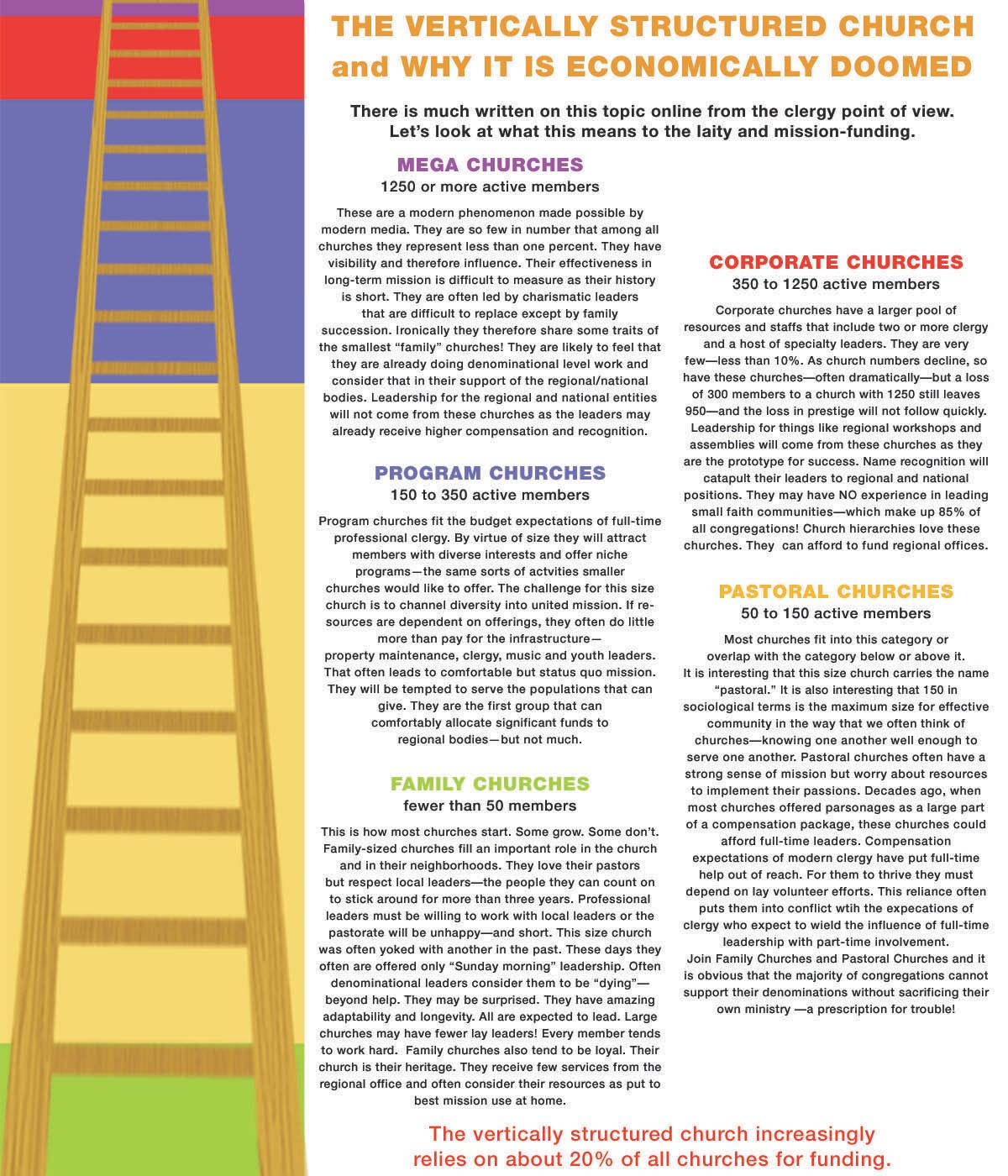The Horizontal Church: Part 2

Why Church Size Will Mean Much Less in the Church of the Future
The Vertical Church values big. Big translates economically into more support for centralized services—one of the reasons the Church was structured vertically in the first place. It often ignores the reality that the effectiveness of church mission relies on community, which functions best on a smaller scale—and who today can do a great deal more on their own than they could twenty years ago.
Above is our infographic that describes congregations by size. It depicts this from the lay point of view. Clergy will be familiar with this terminology. You can find a lot written about it online from the clergy point of view. Clergy discussion usually centers on how church size translates to leadership style.
Less discussed is the economic significance. But it is surely on every pastor’s mind.
The playing field for congregations was more even when churches provided parsonages. This helped to contain one of the largest expenses in hiring professional help. It kept the leadership in the community. No commuters need apply. Almost any size church could afford significant help, sometimes by yoking with another parish or two, but often on their own.
Compensation packages today have put significant professional leadership out of reach for many — maybe even most congregations. Yet the small church continues to play a vital role in community—even as their status wanes.
Much of this disparity will disappear in the coming horizontal church. Even small churches will have wide reach once they embrace modern technology. 2×2’s mission is an example. We are about a dozen members who are reaching about 80,000 people at the first level of engagement each year. The expanding network of social media makes our greatest reach immeasurable.
We will face many challenges as the horizontal church emerges. Here are three.
- Attracting leadership that is savvy in the use of social media and willing to shift the focus of delivery of the Word from nearly empty sanctuaries to the densely populated online community.
This requires skills many who are already in the ministry never imagined having to learn. Since seminaries today are attracting a large number of second career students, who also are new to social media, it will take a while to develop this mindset among church leaders. Congregations eager to start using social media will have to rely on lay leadership or wait—perhaps until it is too late! - Creating an economic infrastructure for this type of ministry requires looking beyond the offering plate for funding.
- Prioritizing church resources differently. The structure of today’s church centers on church communities with property. Property is important but expensive. The horizontal church will have to find ways to make owning property economically sustainable or reconsider the value of owning property.
There are many other considerations, but this is enough as we start to consider the emerging horizontally structured church.
Here’s the big problem. As the Vertical Church begins to die (and this is already underway), leaders, steeped in tradition, will try to bolster the larger churches at the expense of the smaller churches. Haves and Have Nots. This is an economic necessity. Their survival depends on offerings that most churches cannot spare. Larger churches have more resources (at least for now). Leadership focus will be on placing their stable of clergy in churches who can support them and the hierarchy.
Leadership in smaller congregations (most congregations) will increasingly rely on laity who have little voice beyond their own community.
The shift to the horizontal church can be made peacefully, but it is a dramatically different way of thinking. It is likely to come at a cost that will first hurt small churches but will benefit larger churches only short-term. Very short-term.
